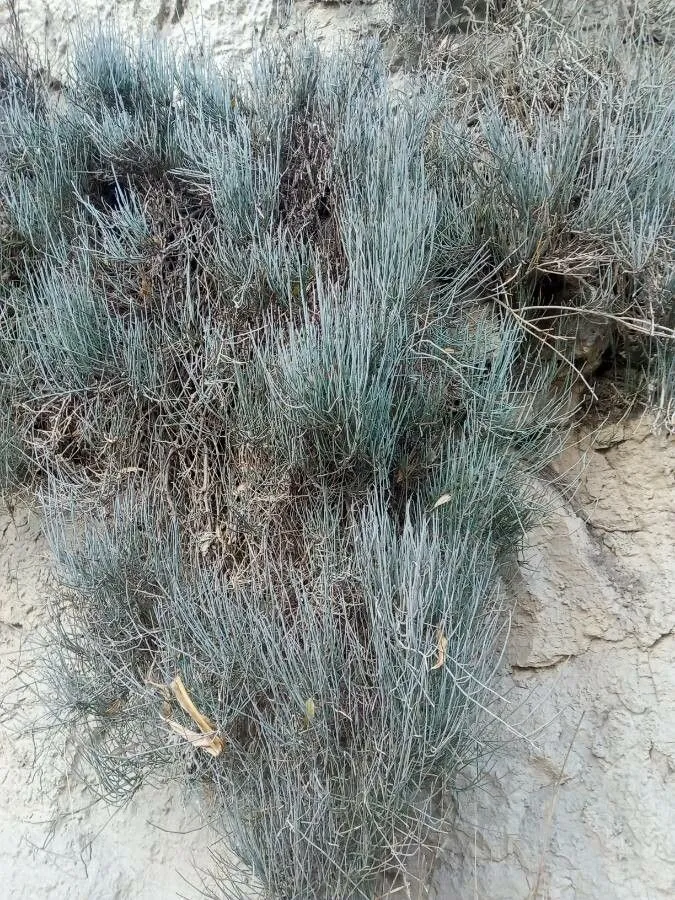
Author: Desf.
Bibliography: Fl. Atlant. 2: 372 (1799)
Year: 1799
Status: accepted
Rank: species
Genus: Ephedra
Vegetable: False
Observations: Macaronesia, W. & C. Medit.
Joint pine (Ephedra fragilis): A Remarkable Plant of the Ephedraceae Family
Introduction
Joint pine, scientifically termed Ephedra fragilis, stands out as one of the most fascinating members of the Ephedraceae family. Originally described by Desf. in Flora Atlantica in 1799, joint pine has consistently garnered scientific interest due to its unique botanical characteristics and its widespread presence in specific geographical regions.
Description
Ephedra fragilis is characterized by its slender, jointed stems which give the plant its common name, joint pine. Unlike typical flowering plants, joint pine showcases a more primitive, gymnospermous structure, bearing resemblance to both conifers and flowering plants in unique ways. The stems, often green and photosynthetic, lack vibrant showy flowers but are efficient in their own right, ensuring the survival of the plant in various harsh conditions.
Habitat and Distribution
Joint pine thrives predominantly in the Macaronesia region as well as western and central parts of the Mediterranean. These areas, known for their temperate climates and diverse ecosystems, provide the ideal habitat for Ephedra fragilis. The plant’s adaptability allows it to survive in arid and semi-arid environments where it often finds itself in rocky, well-drained soils.
Ecological Importance
Being a part of the Mediterranean and Macaronesian flora, joint pine plays a significant role in these ecosystems. It contributes to the biodiversity and stability of the regions, often becoming an integral part of the local flora. This plant is not only resilient in its growth but also facilitates soil stabilization and offers a food source for certain wildlife.
Uses and Benefits
Throughout history, various species of the Ephedra genus have been utilized for their medicinal properties, and joint pine is no exception. Traditional remedies often harnessed its potential for treating respiratory issues and allergies, although one must be cautious due to the potent active compounds present. Modern research continues to explore the full spectrum of benefits that Ephedra fragilis offers, particularly in the realm of pharmacology.
Conservation
With changing climates and increasing human activity, the habitats of Ephedra fragilis face pressures that could threaten the plant’s populations. Conservation efforts are essential to protect this unique species and ensure it continues to thrive in its natural environment. Botanists and ecologists are continuously working towards understanding the needs of joint pine to develop effective conservation strategies.
Conclusion
Joint pine, or Ephedra fragilis, remains a symbol of resilience and adaptability within the plant kingdom. With a rich history dating back to its first documentation in the 18th century by Desf., it continues to intrigue botanists and nature enthusiasts alike. Its presence in the Mediterranean and Macaronesia is a testament to its enduring nature, making it an invaluable part of the botanical world.
By preserving and studying joint pine, we not only safeguard a remarkable species but also unlock potential benefits that could enhance our understanding of plant science and medicine.
Eng: joint pine
En: Joint Pine
Ar: علندى هشة
Ca: Trompera fràgil
Cs: Chvojník křehký
Fi: Sorjaefedra
He: שרביטן שביר
It: Efedra fragile
Ml: എഫിഡ്ര ഫ്രാഗിലിസ്
: Joint pine
Taken Oct 25, 2021 by Giovanni Vannacci (cc-by-sa)
Taken Oct 25, 2021 by Giovanni Vannacci (cc-by-sa)
Taken Jan 10, 2021 by jo (cc-by-sa)
Taken Apr 27, 2019 by Jose Antonio Conde Toledano (cc-by-sa)
Taken Nov 22, 2022 by camille deniau (cc-by-sa)
Taken May 30, 2015 by Tela Botanica − Liliane ROUBAUDI (cc-by-sa)
Taken Dec 27, 2021 by Sagnik Dutta Roy (cc-by-sa)
Taken May 30, 2015 by Tela Botanica − Liliane ROUBAUDI (cc-by-sa)
Taken May 30, 2015 by Tela Botanica − Liliane ROUBAUDI (cc-by-sa)
Taken May 30, 2015 by Tela Botanica − Liliane ROUBAUDI (cc-by-sa)
Taken May 30, 2015 by Tela Botanica − Liliane ROUBAUDI (cc-by-sa)
Taken May 30, 2015 by Tela Botanica − Liliane ROUBAUDI (cc-by-sa)
Taken May 30, 2015 by Tela Botanica − Liliane ROUBAUDI (cc-by-sa)
Taken May 30, 2015 by Tela Botanica − Liliane ROUBAUDI (cc-by-sa)
Taken Apr 24, 2021 by Eloísa Romero (cc-by-sa)
Taken Jun 21, 1999 by Tela Botanica − Liliane Roubaudi (cc-by-sa)
Taken Oct 15, 2016 by Photoflora – Benoit BOCK (©)
Taken May 15, 2018 by Photoflora – Benoit BOCK (©)
Taken Mar 15, 2009 by Photoflora – Benoit BOCK (©)
Taken Aug 7, 2020 by Sylvain Piry (cc-by-sa)
Taken Mar 17, 2022 by Abdul Ghaffar (cc-by-sa)
Taken Aug 17, 2022 by Collados Ana (cc-by-sa)
Taken Aug 24, 2020 by Sylvain Piry (cc-by-sa)
Taken Aug 7, 2020 by Sylvain Piry (cc-by-sa)
Taken Dec 4, 2021 by Annemarie Ahrens-Stehle (cc-by-sa)
Taken Jul 24, 2022 by Luca Favorido (cc-by-sa)
Taken Dec 20, 2021 by Giulia (cc-by-sa)
Taken Aug 15, 2020 by gcontin (cc-by-sa)
Taken Oct 11, 2021 by aurora (cc-by-sa)
Taken Aug 28, 2018 by Diego Nieto Lugilde (cc-by-sa)
© copyright of the Board of Trustees of the Royal Botanic Gardens, Kew.
© copyright of the Board of Trustees of the Royal Botanic Gardens, Kew.
© copyright of the Board of Trustees of the Royal Botanic Gardens, Kew.
Family: Myrtaceae Author: (F.Muell.) K.D.Hill & L.A.S.Johnson Bibliography: Telopea 6: 402 (1995) Year: 1995 Status:…
Family: Rubiaceae Author: Pierre ex A.Froehner Bibliography: Notizbl. Bot. Gart. Berlin-Dahlem 1: 237 (1897) Year:…
Family: Sapindaceae Author: Koidz. Bibliography: J. Coll. Sci. Imp. Univ. Tokyo 32(1): 38 (1911) Year:…
Family: Asteraceae Author: A.Gray Bibliography: Pacif. Railr. Rep.: 107 (1857) Year: 1857 Status: accepted Rank:…
Family: Fabaceae Author: Medik. Bibliography: Vorles. Churpfälz. Phys.-Ökon. Ges. 2: 398 (1787) Year: 1787 Status:…
Family: Aspleniaceae Author: (Cav.) Alston Bibliography: Bull. Misc. Inform. Kew 1932: 309 (1932) Year: 1932…